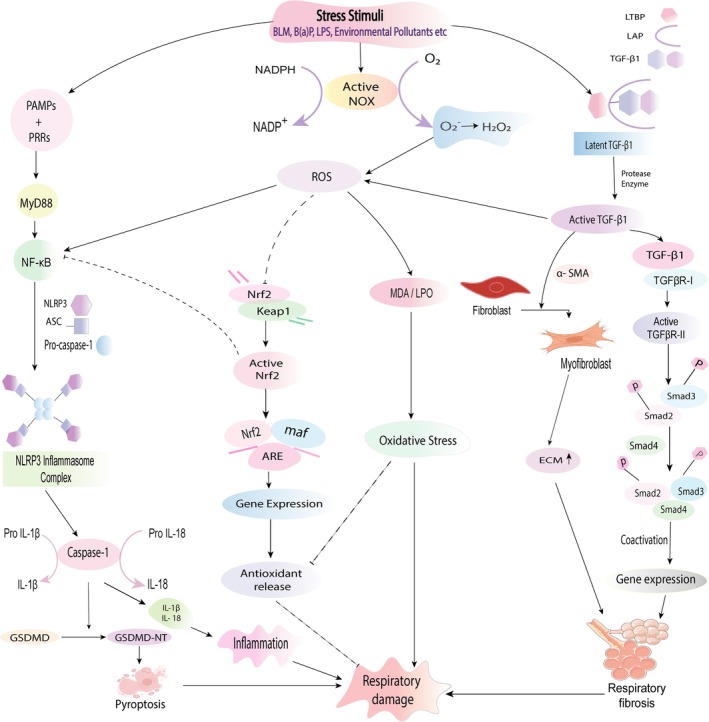FIGURE 3.

Signaling pathways involved in the pathogenesis of respiratory damage. Under stress conditions (e.g., BLM, B(a)P, environmental pollutants), the respiratory cell can be damaged by immune‐mediated signaling pathways. NOX favors the conversion of NADPH to NADP+ by forming superoxide free radicals which in turn produce H2O2. Upregulated ROS causes MDA production that induces respiratory cell damage. Association of PRRs with PAMPs results in MYD88 and further NF‐κB stimulation, leading to the expression of the NLRP3 inflammasome complex. The NLRP3 inflammasome then induces caspase‐1 to convert pro‐IL‐1β, pro‐IL‐18, and GSDMD for producing IL‐1β, IL‐18, and GSDMD‐NT in a respective manner. As a result, pyroptosis occurs. Following cleavage of latent TGF‐β1, active TGF‐β1 binds with TGFβR‐II and activates TGFβR‐I, leading to the expression of phosphorylated Smad2 and Smad3. Following the attachment with Smad4 and in the presence of coactivators, gene expression occurs that incites respiratory fibrosis. Through the use of α‐SMA, TGF‐β1 creates myofibroblasts that cause elevated ECM and ultimately fibrosis. Active TGF‐β1 influences ROS generation, and redox imbalance in turn affects TGF‐β1 production. Redox imbalance further impels fibrosis. Nrf2 dissociates from Keap1 via ROS and helps in gene expression that generates antioxidants for suppressing cell damage. Nrf2 can inhibit cell damage by suppressing NF‐κB (induced by ROS) signaling that causes altered pro‐inflammatory cytokine levels and inflammasome complex inhibition.
